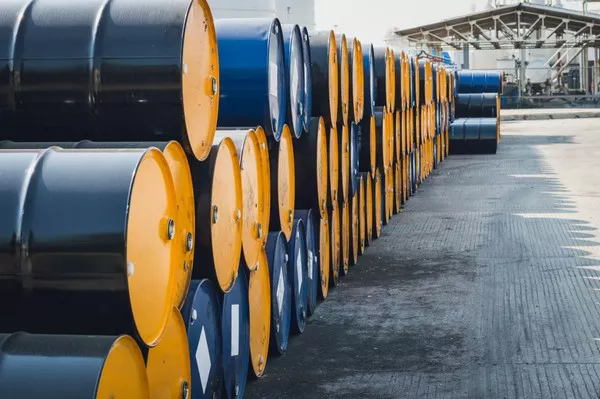Oil futures trading offers an opportunity for investors and traders to participate in the dynamic world of energy commodities. As a crucial component of the global economy, oil plays a significant role in financial markets. Oil futures allow individuals and institutions to speculate on the future price movements of crude oil, providing potential for profit or hedging against price fluctuations.
1. Understanding Oil Futures
1.1 What Are Oil Futures?
Oil futures are financial contracts that obligate the buyer to purchase, and the seller to sell, a specified quantity of crude oil at a predetermined price on a future date. These contracts are standardized and traded on commodity exchanges, such as the New York Mercantile Exchange (NYMEX) or Intercontinental Exchange (ICE).
1.2 The Role of Speculation and Hedging
Oil futures serve two primary purposes in the market: speculation and hedging. Speculators engage in oil futures trading to profit from price fluctuations, aiming to buy low and sell high. On the other hand, oil producers, consumers, and other market participants use futures contracts to hedge against potential price risks. For example, an oil producer can lock in a future selling price to mitigate losses if oil prices decline.
2. Trading Oil Futures
2.1 Research and Market Analysis
Before diving into oil futures trading, conduct thorough research and market analysis. Stay informed about geopolitical events, economic data, and supply-demand dynamics that impact oil prices. Understanding market sentiment and technical indicators can guide your trading decisions.
2.2 Choosing a Brokerage and Account Setup
Select a reputable brokerage firm that offers access to oil futures markets. Ensure that the brokerage provides robust trading tools, real-time data, and reliable customer support. Open a futures trading account, fulfilling any required documentation and depositing the initial margin.
2.3 Comprehending Contract Specifications
Each oil futures contract has specific specifications, including contract size, delivery months, and tick size (minimum price movement). For example, a standard WTI (West Texas Intermediate) crude oil futures contract represents 1,000 barrels of crude oil and is deliverable in specific months.
2.4 Margin Requirements
Understand the margin requirements for trading oil futures. Initial margin and maintenance margin are essential aspects of futures trading. Initial margin is the amount required to open a futures position, while maintenance margin is the minimum balance needed to keep the position open. Margin levels vary, so stay informed about margin calls and maintaining adequate account balances.
3. Analyzing Oil Price Movements
3.1 Fundamental Analysis
Fundamental analysis involves examining supply and demand factors, global economic conditions, geopolitical events, and production levels to assess future oil price movements. Reports from organizations such as the International Energy Agency (IEA) and the Organization of the Petroleum Exporting Countries (OPEC) provide valuable insights for fundamental analysis.
3.2 Technical Analysis
Technical analysis relies on historical price data and chart patterns to predict future price movements. Various technical indicators, such as moving averages, RSI (Relative Strength Index), and MACD (Moving Average Convergence Divergence), help traders identify trends and potential entry/exit points.
4. Implementing Trading Strategies
4.1 Day Trading
Day trading involves opening and closing positions within the same trading day to capitalize on intraday price fluctuations. Day traders often employ technical analysis and closely monitor short-term price movements.
4.2 Swing Trading
Swing trading focuses on capturing price swings over several days or weeks. Swing traders rely on both technical and fundamental analysis to identify potential entry and exit points.
4.3 Trend Following
Trend following is a strategy where traders aim to enter positions in the direction of the prevailing trend. This approach requires patience and discipline to ride the trend until signs of a reversal emerge.
4.4 Spread Trading
Spread trading involves simultaneously buying and selling two different oil futures contracts to profit from price differentials. For example, traders may execute a spread trade between Brent crude and WTI crude oil futures.
5. Managing Risk in Oil Futures Trading
5.1 Setting Stop-Loss Orders
Stop-loss orders are essential risk management tools that automatically close positions at a predetermined price level to limit potential losses. Traders should set stop-loss orders based on their risk tolerance and trading strategy.
5.2 Diversification
Avoid putting all your capital into a single oil futures trade. Diversify your portfolio to reduce exposure to a single commodity and spread risk across various asset classes.
5.3 Risk-Reward Ratio
Assess the risk-reward ratio for each trade before execution. Ensure that potential profits outweigh potential losses, adhering to a risk-reward ratio that aligns with your trading goals.
6. Emotions and Discipline
6.1 Managing Emotions
Oil futures trading can be emotionally demanding, especially during volatile market conditions. Emotions such as fear, greed, and anxiety can impact decision-making. Develop emotional discipline to avoid impulsive actions and stick to your trading plan.
6.2 Maintaining Discipline
Maintain discipline in adhering to your trading strategy and risk management rules. Avoid chasing losses or deviating from your plan due to impatience or fear of missing out.
Conclusion
Oil futures trading offers an exciting opportunity for investors to participate in the energy commodities market. Understanding the basics, conducting thorough research, and employing effective trading strategies are essential for success. Remember to manage risk, stay disciplined, and continuously improve your skills to navigate the dynamic world of oil futures trading successfully. As with any form of trading, practice, education, and experience are key elements in becoming a proficient oil futures trader.

